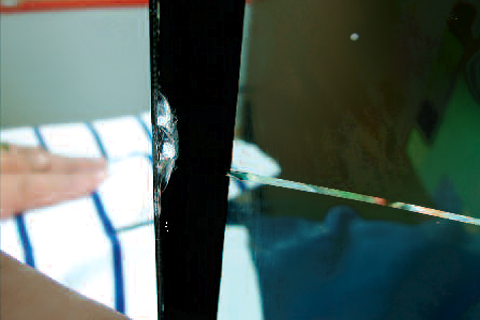How to avoid glass cracking in insulated glazing units
By John Beasley, Principal Consultant
Glass is a strong but brittle material that is sensitive to small defects on its surface. Where there are stresses on the glass, these defects can lead to cracking and failure. Stress can arise from direct mechanical events such as uniform loads or more localised impacts, or indirectly from different temperatures in adjacent regions of the glass.
Geographic influence
In the UK, glazing that faces south or west will generally become warmer than glazing facing east or north. South or west facing glazing is at greater risk of thermal breakage, which occurs when an area of the glass becomes warm but is adjacent to an area that remains cooler. The warmer part of the pane expands while the cooler area does not. This restrains the expansion of the warmer area which is therefore subjected to tensile stresses. If the difference in temperature between the two areas is sufficiently large, a fracture in the glass will occur.
Thermal fracturing
Thermal fracture is characterised by a crack that starts at the edge of a glass pane, initially perpendicular to the edge and face of the pane. It subsequently propagates in a meandering pattern across the glass. The initial crack may be concealed within the glazing rebate upstand or the glazing bead. Imperfections on the edge of the glass will act as regions of stress concentration and stresses will be raised at these locations.
Insulated Glazing Units (IGUs)
The glass that is used in insulated glazing units is at greater risk of thermal fracture because it will heat up faster and become hotter than in single glazing. Annealed glass will fail at lower stresses than heat strengthened, toughened glass. The likelihood of a pane of annealed glass suffering from a thermally induced crack will be greatly influenced by the condition of the pane edge.
Acceptable levels of damage to the pane edge
Section 6.2.3.1 of BS 572-8:2004, Glass in building – Basic soda lime silicate glass products – Part 8: Supplied and final cut sizes, provides guidance on acceptable edge defects for panes of glass after they have been cut to size – but notes that the limitations only apply where there is not risk of breakage from thermal stress.
Acceptable levels of edge damage in glass that may be at risk of thermally induced breakage are shown in Technical Note 65, thermal fracture of glass (Centre for Window and Cladding Technology, May 2010).
Recommendations
As a general recommendation, where units face south or west, IGUs should always be examined carefully for edge damage prior to installation to check that it does not exceed that recommended in CWCT Technical Note No. 65. Where units face north or east edge damage should not exceed that recommended in BS 572-8:2004. Excessively damaged units should be rejected at the outset.

